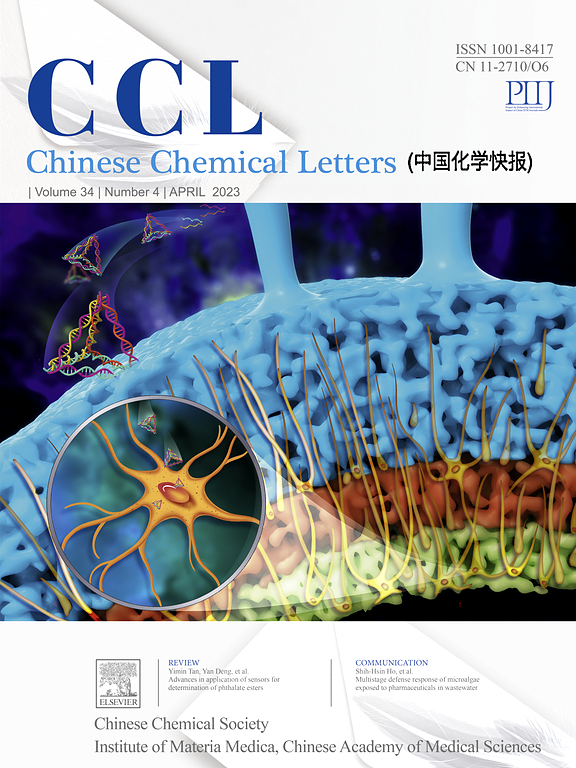Facile synthesis of all-carbon fluorinated backbone polymers containing sulfide linkage as proton exchange membranes for fuel cells
IF 9.4
1区 化学
Q1 CHEMISTRY, MULTIDISCIPLINARY
引用次数: 0
Abstract
Aryl-ether bonds are facile to attack by oxidizing radicals, thus stimulating the exploitation of ether-free polymers as proton exchange membranes (PEMs) for the long-lasting operation of fuel cells. In this study, a novel class of PEMs derived from all-carbon fluorinated backbone polymers containing sulfide-linked alkyl sulfonic acid side chains have been developed through a straightforward and effective synthetic procedure. The sulfide-linked alkyl sulfonate groups were tethered to the poly(triphenylene pentafluoro phenyl) backbone through a quantified and site-specific para-fluoro-thiol click reaction. Owing to the existence of obvious phase separation morphology between hydrophobic main chain and hydrophilic sulfonate groups in the side chains, resulting PEMs demonstrated favorable proton conductivity of 142.5 mS/cm at 80 °C, while maintaining excellent dimensional stability with an in-plane swelling ratio of <17% as well as a through-plane swelling ratio of <25%. They also exhibit elevated thermal decomposition temperatures (Td5% exceeding 300 °C) alongside high tensile strength (>50 MPa). Furthermore, the ether-free full-carbon fluorinated main chain and the -S- group in the side chain, which serves as an effective free-radical scavenger, providing good chemical stability during Fenton's test. The PEMs achieved a maximum power density of 407 mW/cm2 in a single H2/air fuel cell, and an open-circuit voltage decline rate of 0.275 mV/h in a durability test at 30% RH and 80 °C. Concurrently, the hydrogen crossover current density is only 1/3 of that of Nafion 212. These findings reveal that the resulted PEMs display considerable antioxidative properties along with commendable performance, with prospective applications in proton exchange membrane fuel cells.

简便合成含硫化物连接的全碳氟化骨架聚合物作为燃料电池的质子交换膜
本文章由计算机程序翻译,如有差异,请以英文原文为准。
求助全文
约1分钟内获得全文
求助全文
来源期刊

Chinese Chemical Letters
化学-化学综合
CiteScore
14.10
自引率
15.40%
发文量
8969
审稿时长
1.6 months
期刊介绍:
Chinese Chemical Letters (CCL) (ISSN 1001-8417) was founded in July 1990. The journal publishes preliminary accounts in the whole field of chemistry, including inorganic chemistry, organic chemistry, analytical chemistry, physical chemistry, polymer chemistry, applied chemistry, etc.Chinese Chemical Letters does not accept articles previously published or scheduled to be published. To verify originality, your article may be checked by the originality detection service CrossCheck.
 求助内容:
求助内容: 应助结果提醒方式:
应助结果提醒方式:


